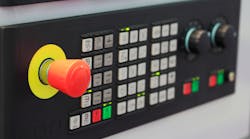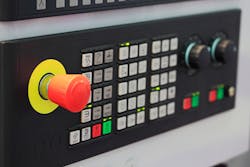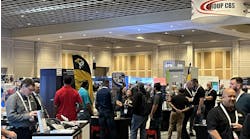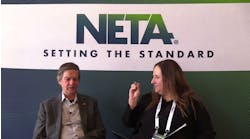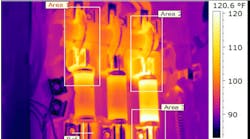Although it would be nice to be factory-trained on every piece of equipment (and have a troubleshooting decision-tree or flowchart, too!), reality hands us a different situation. You may be tasked with troubleshooting a piece of equipment or a system that you haven’t seen before.
Caution: Before proceeding, make sure you are qualified (per the OSHA definition) to service that category or class of equipment.
For example, you have standard training as an electrician, so you can troubleshoot a 120V receptacle problem. But your boss wants you to figure out why a 400A, 480V circuit breaker is malfunctioning and repair it. You may be qualified to determine the problem is in the breaker, but you aren’t qualified to actually work on that breaker.
The first step
The most fundamental step in troubleshooting is to check the power supply. For example, a motor won’t start. Is the disconnect open? If the disconnect is closed, you’d probably want to check the motor overload devices (typically “heater” strips). If they look OK, then you’d use your DMM to see if there’s power to them, and, of course, on the motor side of each one.
Save time
If there’s no power, employ the “divide and conquer” strategy to find the power problem. In this situation, for example, you’d go to that disconnect and see if there’s power to it. If so, do a visual inspection before closing it so you know (with very high probability) there will be power coming from the disconnect.
If there’s power at the disconnect, then you’ve saved yourself a wasted trip to the breaker that’s in a panel halfway across the plant. The problem is between the disconnect and the overload device.
If there’s no power at the disconnect, then you’d go to the branch circuit breaker and check it. If the breaker is supplying power, the problem is between there and the disconnect.
When using the “divide and conquer” method, try to envision the entire circuit and where the functional halfway point is. By picking the functional halfway point, you eliminate checking many things that are going to check out as OK.
Check the switches
After you are sure there’s power, you need to know something about the equipment to proceed further. Usually, you want to check the most likely cause of failure.
Let’s say it’s a hydraulic press. These always have a light curtain, deadman switch, or other protective device. That’s a likely point of failure if the thing won’t start. Similarly, a conveyor system always has at least one emergency stop (E-stop) switch unless the management is safety-averse.
Similar to the safety device is the “permissive” device. It gives the system permission to start. This can be a limit switch (e.g., drain valve closed), temperature switch, pressure switch or other device whose contacts must be in the OK position (usually, that’s closed) for the system to start. You may need the system drawings to find it.
Out of control?
Let’s say the system is running, but not properly; the output is wrong. If the system is under PLC or DCS control, it is going to have an input side, a controller, and an output side. The problem is almost always on the output side, typically at the final control element. That’s because this device undergoes the most stress; a valve must move and interact with the process, but the temperature sensor that sits on the vessel does not.
Almost never will the problem be in the programming (PLC logic or DCS program), once the system is commissioned. Think about it; PLC logic, unlike a valve, isn’t going to wear out. There’s no motor that can burn up in a logic diagram, but the one moving the control valve certainly could burn up.
So let’s wrap up this lesson with a recap:
- Check the power.
- Use the “divide and conquer” method to reduce hunting time when looking for where a problem is.
- Test safety devices and permissive devices.
- In a process control system that isn’t behaving correctly, the problem is almost certainly to be with the final control element, so check that first.
